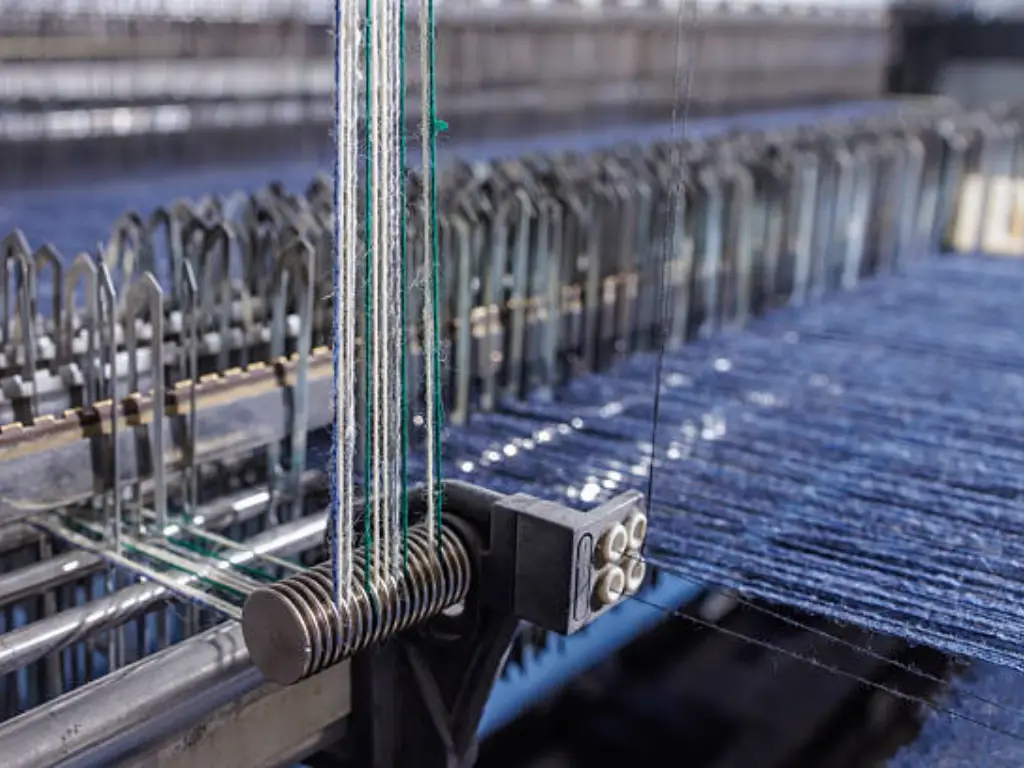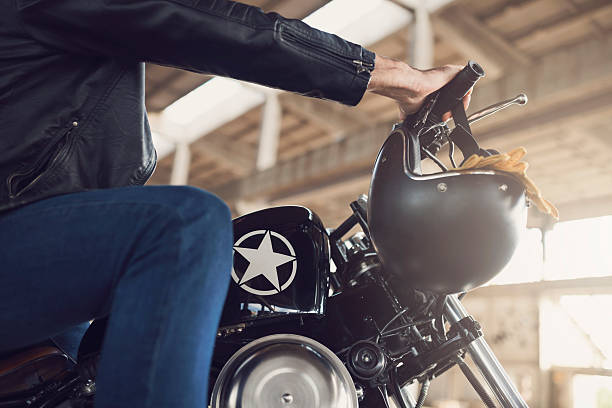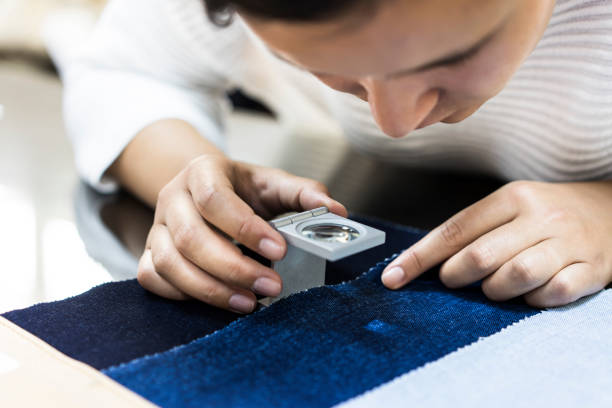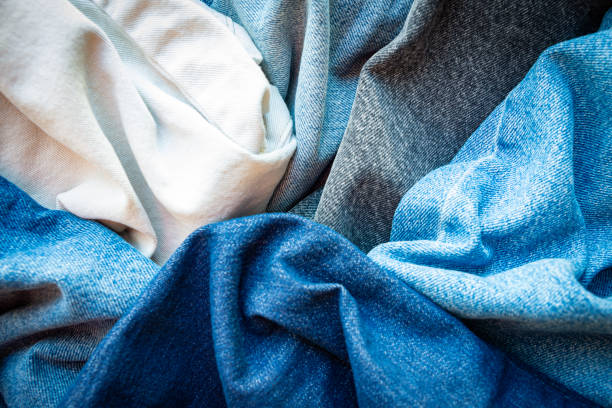プレミアムアパレルラインを構築している場合, 生デニムは、優れた品質と時間の経過とともに変化する能力の両方を備えた生地です. 大量生産のデニムとは異なり、, 着る人とともに進化する, 独自のフェードとパーソナライズされたフィット感を開発, それぞれのペアを真にユニークなものにする.
このガイドでは、生デニムの基本、つまり生デニムとは何かについて説明します。, どのように作られるのか, そしてそれをデザインに組み込む方法. 最後までに, 自信を持って生デニムを調達して使用するための知識が得られます, 着るたびに個性が増すアイテムを作る.
生デニムとは?
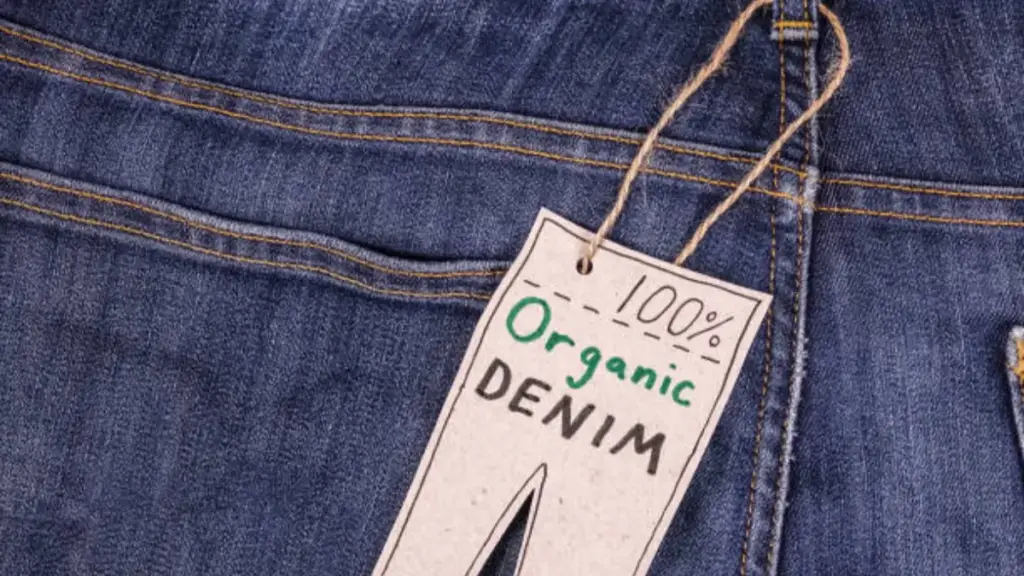
生デニムの取り扱いに入る前に, 実際に何を扱っているのかを理解する必要がある. 生デニムは未洗いです, で染色された未処理の綿生地 インジゴ 織機から出たばかりの、最も純粋な状態のままです。. 硬いです, 暗い, あなたのビジョンに合わせて形を整える準備ができています (そしてお客様の身体も).
生デニムの違いはここにあります. 主に 2 つのタイプに遭遇します:
- 防縮加工を施したサンフォライズド生デニム, 最小限に縮みますので (について 1-3%) 最初の洗濯後.
- 加工を施していない未加工の生デニム, つまり、最大まで縮小する可能性があります 10% 初めて水に触れたとき.
生デニムのテストと取り扱いに, いくつかの基本を手元に置いておく: 収縮を追跡するための巻尺, 洗濯テスト用の生地見本, 侵入プロセスを記録するためのノート. 単にファブリックを扱うだけではなく、進化を管理しているのです.
生デニムの見分け方?
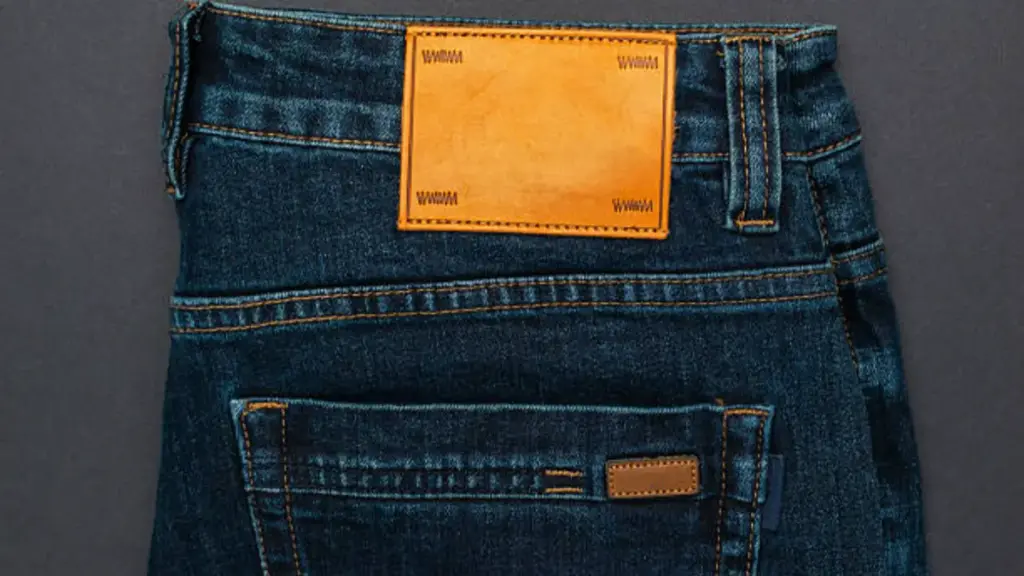
剛性
生デニムを調べると, 最初に気づくのはその硬さです. 手に持った感じはほぼボール紙のようです。これが作業中のサイズ調整です。, 生地を堅く保つために製造中に塗布されるデンプンのような物質. これは欠陥ではありません; それは織機から出したばかりの未洗いデニムの特徴です.
色
色をよく見てください. 生デニムは奥が深いです, プレウォッシュジーンズよりも濃く均一な濃いインディゴ, 人工的な色褪せなし, ひげ, または悲惨な. インディゴ染料が綿繊維の表面をコーティングします。, それらを貫通しない, これにより、デニムが経年変化するにつれて、コントラストの高い色落ちが生まれます。. 豊かな色を維持し、不要なインディゴのにじみを防ぎたい方に, あなたは私たちを参照することができます デニムの色堅牢度に関するガイド ヒントのために.
重さ & テクスチャ
重さと質感を感じてください. 生デニムは、洗浄済みのデニムに比べて著しく重く、密度が高くなります。. この密度は、緻密な織りと、まだ繊維が柔らかくなったり分解されたりしていない洗濯プロセスから来ています。.
生デニム vs. プレウォッシュデニム: 簡単な比較
- 生デニム 実質的で構造的に感じられる, さわやかな手で.
- プレウォッシュデニム ドレープがより簡単になり、最初から柔らかく感じられます.
- 生デニム 形状をしっかりと維持します, プレウォッシュデニムはより柔軟で柔軟です.
生デニムのこの初期の硬さは敬遠するものではありません。これがデニムを特別なものにする慣らしプロセスの開始点です。.
生デニムの製造工程
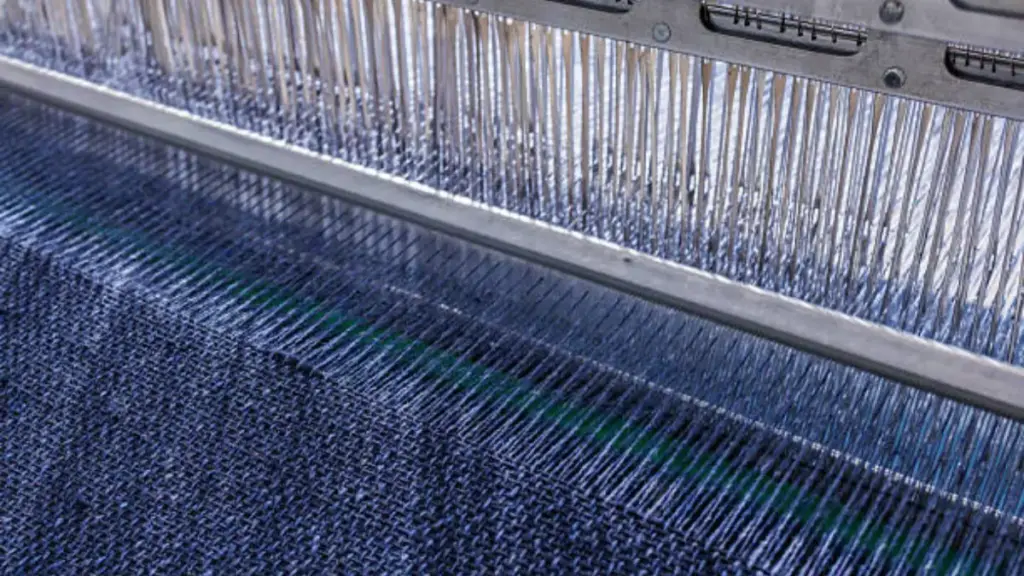
生デニムの生産
生デニムの生産は始まります シャトル織機, デニムをゆっくりと織る伝統的な機械, その結果、より高密度で耐久性のある生地が得られます. 藍染めの工程は丁寧です, 染料が糸の表面に定着するので、, 繊維に浸透しない. これにより、時間の経過とともに明確なハイコントラストのフェードが発生する可能性があります。. 合成染料とは異なります, 繊維を完全に飽和させます, インディゴはより本格的でユニークな仕上がりになります.
デニムが織られ、染色されたら, 仕上げの段階に移ります, 消毒が行われる場合もあれば、消毒されないままになる場合もあります. サンフォライズ 将来の収縮を軽減する事前収縮プロセスです。, 一方、未消毒のデニムは最大まで縮む可能性があります。 10% 洗濯後. この違いは、はめあいを設計するときに重要です, 未消毒のデニムは最初の洗濯後に形状が大きく変化する可能性があるため、.
技術的な課題
生デニムの生産には独特の技術的課題が伴います, 特に品質管理に関しては. 重要な要素には織り密度が含まれます, 一貫した染色, 耳付きデニムを使用している場合は、耳の端をきれいにします。. これらの要素は、デニムの耐久性と経年変化を保証するために不可欠です。. どの段階でも職人技が不十分だと、最終製品の品質に大きな影響を与える可能性があります, 見た目と感触の両方を損なう.
プレミアムな結果を確実に得るために, これらの側面を優先し、生デニムの生産を深く理解している工場と提携することが重要です. プロセスのあらゆる手抜きは、生地の長期的な魅力を損なう可能性があり、, 順番に, ブランドの評判を傷つける.
侵入 & フェード処理: 個性的なデニムを作る
生デニムの慣らし
お客様が初めて生デニムを履いたとき, 彼らはその硬さに気づくでしょう - ほとんどボール紙のような質感です. この剛性が生デニムの特別な理由の一部です. ジーンズを履き続けるうちに, 生地は徐々に柔らかくなり、体にフィットします, 独特の形状に適応する, 動き, そして習慣. 時間とともに, デニムがもっと快適になる, 着用者に合わせたフィット感を開発.
色褪せの魔法
ここで変革が起こります: インディゴ染料は繊維の表面だけをコーティングしているため、, 折り目や折り目ごとにハイコントラストのフェードが作成されます. 膝の裏など、最も曲げやすい部分, 腰の周り, そして袖口には、特徴的なひげと蜂の巣が形成されています. これらのパーソナライズされたパターンにより、すべてのジーンズが真にユニークになります, 着用者のライフスタイルの「生きた記録」を作成する.
顧客をガイドする
最初の数か月間はできるだけジーンズを履いて、慣らしプロセスを受け入れるよう顧客を奨励します。. 最初に洗濯する前にジーンズを着用する頻度が高いほど, よりドラマチックで本物のフェードになります. 洗うときは, ジーンズを裏返すようにアドバイスしてください, 冷水を使う, そして自然乾燥させます. 洗濯の頻度も減り、, デニムは美しく経年変化します, 忍耐に報い、真に唯一無二のジーンズを生み出す.
生デニムの価格が高い理由?
生デニムのプレミアム価格は職人技の品質を反映しています. しっかりと織られたコットンは, 精密な藍染め, 熟練した生産プロセスはすべて、耐久性があるだけでなく、時間の経過とともに独特の経年変化をもたらすファブリックに貢献しています。. 大量生産のデニムとは異なり、, 工業用洗浄で素早く処理されます。, 生デニムは着る人とともに進化する, 着れば着るほど価値が増す商品です.
お客様向け, 生デニムは単なるジーンズ以上のものを表します. これは、時間の経過とともに改善される製品への投資であり、パーソナライズされたフェードの開発です。, カスタムフィット, そして永続的な耐久性. サンフォライゼーションなどの機能に焦点を当てることで, 耳の構造, そして自然収縮, 生デニムがなぜ高い価格を正当化するのかを顧客が理解できるようにすることができます: 彼らは進化し、今後何年にもわたって関連性を維持する製品にお金を払っているのです.
ブランドのビジョンに合わせたカスタムデニム
生地から仕上げまで完全なコントロールを提供する信頼できるデニムメーカーとの提携. 柔軟な注文サイズのメリット, 持続可能な素材, あなたのユニークなデニムデザインに命を吹き込む、毎月何百もの新鮮なスタイル.
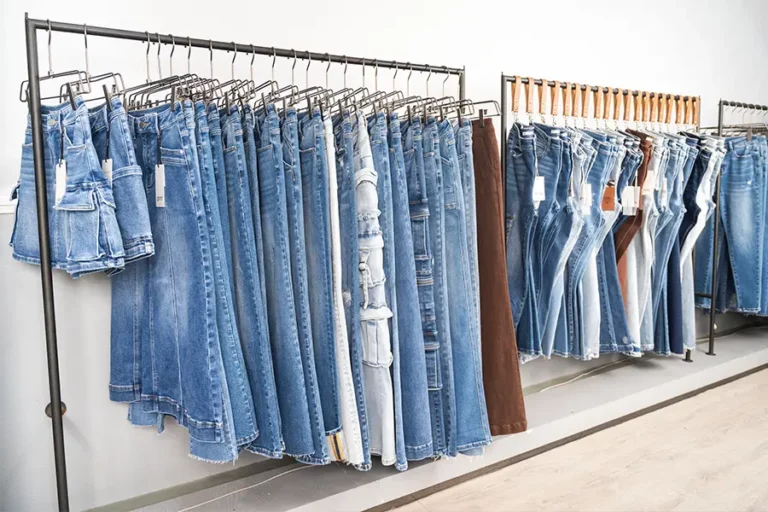
デニム生地 & 耳: 主な違いの比較表
| 側面 | 生デニム | セルベッジデニム |
| 意味 | 未洗浄, 染色工程から直接製造された未処理のデニム. | 伝統的なシャトル織機で織られたデニムで、端はほつれを防ぐために自己仕上げされています。. |
| 主な機能 | 治療の欠如 (洗濯や苦痛はありません). | クリーン, 耐久性のあるエッジに特徴的な耳のラインが付いています。. |
| 慣らし運転のプロセス | 時間の経過とともに体に馴染み、独特の色落ちが生まれます。. | 同様の慣らし運転プロセス, ただし、耳の構造によりエッジはそのまま残ります。. |
| 製造方法 | どの織機でも織ることができます, 必ずしも伝統的ではない. | ゆっくりと織ります, 幅の狭いシャトル織機, より職人的なプロセスにする. |
| 料金 | 生産が早いため、セルビッジに比べて一般的にコストが低くなります. | 通常、速度が遅いため、より高価になります, 伝統的な織り方と限られたヤード. |
| 耐久性 | 強くて耐久性のある, ただし、使用される織り方によって異なります. | シャトル織機プロセスによるより緻密な織りにより、通常はより耐久性が高くなります。. |
| 外観 | しっかりとしたインディゴカラー, 時間の経過とともに劇的に色あせてしまう可能性があります. | 袖口または裾の内側に見えるきれいな耳のエッジ, 美観を高める. |
| 人気 | 本物志向で広く人気, 洗っていない感触. | 職人技と目に見える耳のエッジが高く評価されています, デニム愛好家に人気の. |
| 組み合わせ | 生デニムには耳付きまたは耳なしがあります. | セルビッチデニムは生でもプレウォッシュでも可能です, 未洗浄と処理済みの両方のオプションを提供. |
生デニムのお手入れとメンテナンス
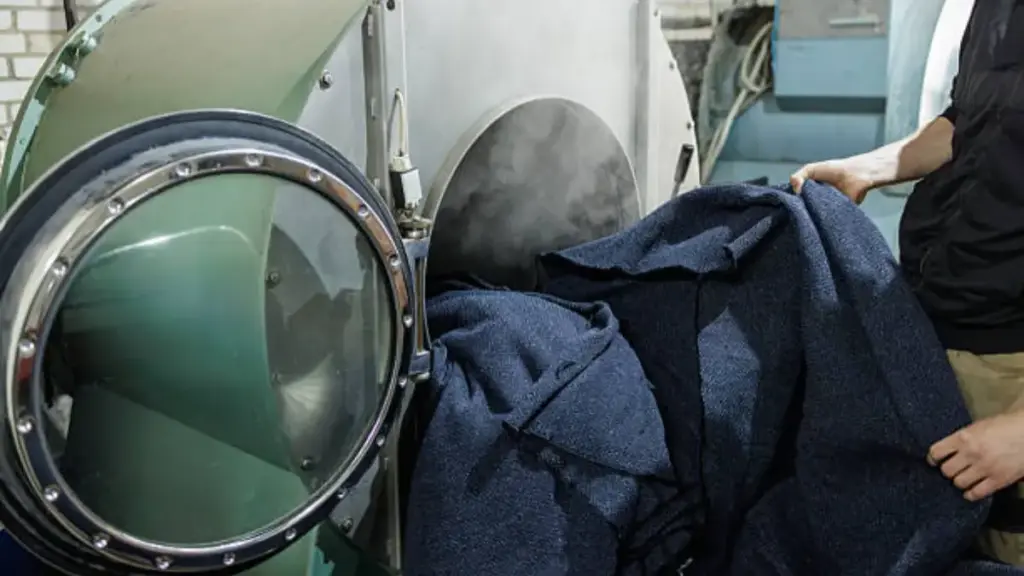
適切な洗浄
生デニムを頻繁に洗いすぎると、せっかく開発したハイコントラストの色落ちがすぐに失われてしまう可能性があります。. 生デニムに使用されるインディゴ染料は繊維の表面に付着します。, それらに吸収されるのではなく. 結果として, 洗うたびにその豊かな色が少し剥がれ、自然な馴染みのプロセスが遅くなります。.
ジーンズを洗う時期が来たら、通常は数か月間着用した後、手洗いまたは中性洗剤を使用した冷たい洗濯機で洗ってください。, 無着色洗剤. 表面の色褪せを防ぐために、ジーンズは必ず裏返しにしてください。. 乾燥機の使用は避ける; その代わり, ジーンズを自然乾燥させて形状を維持し、縮みを防ぎます。, 特に未加工のデニムの場合.
保管のヒント
適切な保管のために, ジーンズを吊るすか、既存の折り目に沿って慎重に折ります. 引き出しや収納スペースにぎっしり詰め込まないでください, 不要な折り目が発生する可能性があるため、. 耳付き生デニムを使用している場合, 耳の端が見える状態で保管してください. これは、生地の職人技への感謝を示し、端が損なわれないようにする、小さいながらも意味のあるディテールです。.
生デニムに関するよくある質問
生デニムとサンフォライズドデニムの違いは何ですか?
生デニムとは未洗いのデニムのことを指します, 織機から直接製造された未処理の生地, 一方、sanforized は生地に適用される防縮加工を指します。. サンフォライズ加工を施した生デニムをご用意できます (あまり縮まないもの) または未精製の生デニム (最初の洗濯後に大幅に縮みます).
生デニムは最初の洗濯後にどれくらい縮みますか?
サンフォライズされた生デニムは通常縮みます 1-3%, 殺菌されていない生デニムは縮む可能性がありますが、 5-10% 長さ、幅ともにそれ以上. 収縮は水温と特定の生地の構造によって異なります。.
生デニムの調達と製造はより高価ですか?
生デニムは洗濯や処理の工程を省略できるため、実際には生産コストが安くなります。. 市場で見られるプレミアム価格は素材の品質を反映しています, 職人による生産方法, 製造コストそのものではなくブランドストーリー.
コレクション内の生デニムの最適な用途は何ですか??
生デニムはクラシックな 5 ポケット ジーンズに美しく機能します, ワークジャケット, 顧客が信頼性とパーソナライゼーションを重視する伝統にインスピレーションを得た作品. デニム愛好家や慣らしの旅を好む人をターゲットにしたコレクションに最適です。.
生デニムの価値をお客様にどう伝えるか?
旅のストーリーを伝える - 着用することでそれぞれのペアがどのように独自のものになるのか. 慣らし運転の手順を説明する, フェード前後の例を表示する, 単なるジーンズではなく、品質と信頼性への投資として位置付けています。.
生デニムで前進する道
これで、未洗いの生デニムについて包括的に理解できました。, 未処理の自然, サンフォライズされたオプションとサンフォライズされていないオプションの違い, パーソナライズされたフェードにつながる独自の慣らしプロセス. この知識を持って, 情報に基づいた意思決定を行ってブランドを際立たせ、真にユニークな製品を顧客に提供する準備ができています.
今, この知識を行動に移す時が来ました. で チャンゴン, 私たちはプレミアムデニムを専門としています, 低MOQの柔軟性とブランドのビジョンに合わせたカスタマイズの専門知識を提供します. お客様が何年も大切にしてくれるデニムづくりを始めましょう.


